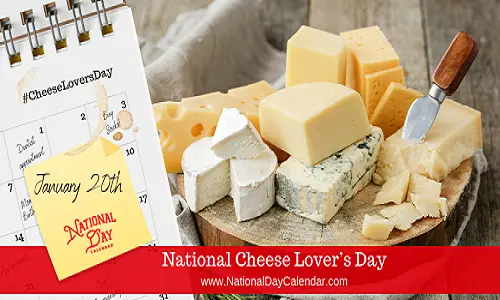Italian Cheese Guide
Italian Cheese Guide


Asiago (pronounced ah-see-ah-go) is a cow’s milk cheese that can assume different textures, according to its aging. Fresh Asiago (Asiago Pressato) is smooth and aged Asiago (Asiago d’allevo) has a
crumbly texture and a distinctive sharp flavor. The aged cheese is often grated in salads, soups, pastas, while the fresh Asiago is sliced for sandwiches or melted in dishes.
crumbly texture and a distinctive sharp flavor. The aged cheese is often grated in salads, soups, pastas, while the fresh Asiago is sliced for sandwiches or melted in dishes.

Bel Paese is a semi-soft cow’s milk cheese. It has a mild, buttery flavor, similar to mozzarella but with more body and tang. The color is a pale, creamy yellow. It is suitable for snacks, as a dessert cheese, or for melting on casseroles or pizza.

Brinata means “early morning frost” in Italian. It has an edible, delicate white rind and a moist, milky interior. The interior is off-white, with lots of small eyes Brinata tastes like an exquisite brie, but with a slight sheepy tang and a bit more moisture. Brinata is great on a sandwich or in wedges paired with a nice dry white wine.

Burrata is a sack of mozzarella filled with buttery cream. Classified as a “spun” or “pulled curd” cheese, burrata’s uniqueness lies in the buttery texture of the cheese’s center:

Crescenza is a rich, creamy, fresh cheese
that is also known as Stracchino. Crescenza’s texture and flavor are similar to Gorgonzola without the blue veins and it becomes very soft and speadable at room temperature. It is made from cow’s milk in the northern provinces of Italy.
that is also known as Stracchino. Crescenza’s texture and flavor are similar to Gorgonzola without the blue veins and it becomes very soft and speadable at room temperature. It is made from cow’s milk in the northern provinces of Italy.
.jpg)
Crotonese is a pure sheep’s milk cheese. This cheese come in two varieties; fresh (soft) aged about 2 months and (hard) aged about 3 months. This cheese exhibits a truly distinctive flavor; described as a cross between a Parmesan and a Pecorino Romano. Delicious grated or as a table cheese. Formed in woven molds, its surface is a bit oily due to the natural oils in the ewe’s milk.
Fontina is a cow’s milk cheese. It has been made in the Aosta Valley, in the Italian Alps since the 12th century. The original Fontina cheese from Italy is fairly pungent and has quite an intense flavor, although cheeses labeled Fontina that are produced in other countries tend to be much milder. Serve with Chianti.

Gorgonzola is a veined Italian blue cheese, made from unskimmed cow’s and/or goat’s milk. Authentic Italian gorgonzola comes in 2 varieties – Dolce meaning sweet and Mountain which is sharper. Gorgonzola Dolce is luxurious with a tangy creaminess. Gorgonzola goes well with short pasta, such as penne or rigatoni. It can be melted into risotto, used as a pizza topping, or served with polenta.

Mascarpone is an ultra-rich cheese best known as an ingredientin tiramisu. It is made from the cream of cow’s milk but no cheese starter or rennet is used. Mascarpone is made by draining the moisture from the cream through a finely woven cloth. It is milky-white in color and It is sometimes used instead of butter or Parmesan cheese to thicken and enrich risotto.

Mozzarella is a generic term for several kinds of Italian cheeses that are made by spinning and cutting. Fresh mozzarella is a white, semi-soft cheese, with a high-moisture content. Mozzarella di Bufala is made from domesticated water buffalo milk. Mozzarella is used for most types of pizza, lasagna, or served with sliced tomatoes and basil in Insalata Caprese.

Parmigiano-Reggiano is a cow’s milk cheese with a flaky texture and rich nutty flavor. Real Parmigiano-Reggiano can only be made in a defined region of northern Italy that includes the counties of Parma and Reggio Emilia in Emilia-Romagna.

Pecorino Romano is a hard, salty Italian cheese made from sheep milk It is one of Italy’s oldest cheeses. It is used as a grating cheese over pasta, soups, and salads, and not recommended as a table cheese. It has a bit sharper taste than Parmesan. Pecorino Toscano (from Tuscany) or Pecorino Sardo (from Sardinia) are not particularly salty) are generally eaten by themselves or in sandwiches.
Provolone is a whole milk cow’s cheese that is produced in northern Italy. Provolone is a semi-hard
cheese with taste varying greatly from Provolone Piccante (piquant), with a very sharp taste, to Provolone Dolce (sweet) with a very mild taste. Great for sandwiches, in omelets, and salads.
cheese with taste varying greatly from Provolone Piccante (piquant), with a very sharp taste, to Provolone Dolce (sweet) with a very mild taste. Great for sandwiches, in omelets, and salads.
Ricotta Salata is a variation of ricotta; this pure white, firm rindless cheese originated in Sicily. It is made from lightly salted sheep’s milk curd that is pressed, dried, and aged for a minimum of 3 months. Ricotta salata has a nutty, sweet flavor that is great in salads and pasta dishes.

Taleggio derives its name from the caves of Val Taleggio in the alpine Lombardy region of Italy, where it has been produced since before the 10th century. It has a strong smell but its flavor is comparatively mild with an unusual fruity tang. Its crust is thin and studded with salt crystals. Taleggio can be eaten with salads or on bruschetta. It melts well and can be used in risotto or on polenta
This site contains product affiliate links. We may receive a commission if you make a purchase after clicking on one of these links.



